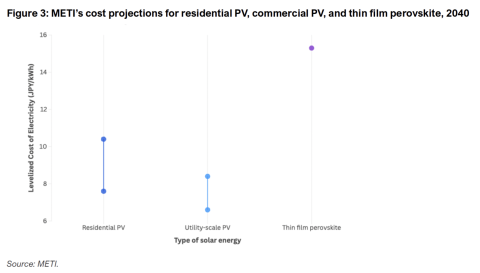Key Findings
Indonesia will need to build a biomass capacity of more than 1.4 billion tons/year or roughly 200 times the capacity of the US to fulfill its ambition.
PLN’s increased operating profit in FY2020 was mainly a result of a huge drop in fuel expenses, mostly from oil and gas. PLN financial metrics would have looked different if they have implemented the new SFAS 73 accounting standard implementation.
PLN’s inability to set customer tariffs since 2017 has worsened its revenue model.
Executive Summary
Recent announcements by Indonesia’s state-owned utility company Perusahaan Listrik Negara (PLN) and the Ministry of Energy and Mineral Resources (MEMR) referencing potential net zero emission (NZE) targets in the power sector have caught public attention both in Indonesia and abroad.
PLN hopes to achieve carbon neutrality by 2060, in addition to Indonesia’s target of 23% renewables by 2025. In its announcement to the Parliament, PLN aims to start retiring its conventional steam power plants by 2030, subcritical coal plants by 2035, supercritical plants by 2040 and ultra-supercritical plants by 2056.
The willingness of high-profile Indonesian government officials to sketch out new commitments to long-term climate change mitigation targets suggest that the issues are getting more attention from senior policymakers and that they are facing more pressure from the public to keep pace with public expectations.
So far, policymakers leading this new climate-friendly initiative should be pleased with the media response as the headline commitments were greeted with positive coverage. Indeed, there has been some positive development within the plan. What often falls under the radar, however, is that the high-level statements and current and medium-term energy sector policy initiatives do not appear to line up. This is something that analysts and sector experts cannot overlook.
To put the Net Zero and Green Power Sector Business Plan (RUPTL) ambition into a practical policy context, IEEFA has reviewed the announcements and compared the announced numbers with the existing data and planning documents that define actual project and budget commitments for Indonesia’s power sector. Any effort to evaluate the NZE targets should be tested against the new 2021 power sector planning document, known as the RUPTL, but it has not yet been released. To fill the data gap, the Institute for Energy Economics and Financial Analysis (IEEFA) has referenced publicly available documents such as the 2019 RUPTL, PLN 2019 and 2020 Statistics, PLN 2020 Annual Reports, presentation slides of MEMR and PLN on the 27th of May 2021, and the MEMR press release on the 4th June 2021. IEEFA has also reviewed data from the Draft RUPTL 2021 (DRUPTL 2021) which was available in the market in mid-June 2021. Taken together, these documents create a transparent record of the approved projects that are in the pipeline for development.
By comparing these documents, IEEFA has found that:
1. The disclosed NZE plan is not based on new initiatives that represent a reset of Indonesia’s carbon emissions pathway. Instead, the plan simply highlights existing plans for an orderly decommissioning of sub-scale and antiquated coal facilities, following the economic age of each plant. There is no early retirement in sight. A close examination also revealed the following:
- Approximately 16 GW of new coal capacity from the 35 GW program will still come online between 2021 and 2030. MEMR has conveyed President Jokowi’s instruction that no more coal plants should be considered with the exception of those that are under construction or have reached financial close. With such exception, it is expected that 100% of Independent Power Producers’ (IPPs) coal pipelines in the 35 GW program will continue, despite the looming overcapacity in the JavaBali and Sumatera grid.
- Out of the 16 GW, IEEFA estimates that around 4.3 GW of coal plants were still in ‘Financing Stage’ at FY2020 with most of them owned by IPPs.
- The first phase of PLN’s 1 GW steam power plants (PLTU) retirement planned for 2030 are very old plants, that will have been in service for 50-60 years, and have been operating on oil or gas.
- 10 out of the 12 ‘troubled’ small coal plants that were targeted for cancellation were actually cancelled two years ago in 2019 RUPTL.
2. Some new announcements that caught our attention include:
- 6.8 GW of NEW coal power “modified” or “postponed” in the DRUPTL 2021. Given the significant amount of coal power capacity that has either been shifted to renewable baseload or postponed in the plans, it raises questions about why PLN’s and MEMR’s announcements have not drawn more attention to this initiative. By contrast, they provided a detailed explanation covering 34 problematic power plants with total capacities of only about 627 MW.
- The proportion of renewables is now higher and the electricity demand growth projection for the next 10 years is toned down. The change in energy proportion has largely been due to the decline of planned new fossil fuel capacity additions - rather than a sharp increase for renewables. Nevertheless, this should be acknowledged as a step in the right direction. In addition, PLN has now toned down the demand growth projection from an overly ambitious 6.4% to 4.9%.
- Biomass co-firing, large scale hydro and geothermal are the chosen shortcut to reach the Paris Agreement target in 2025. Large scale hydro remained within PLN’s fast track plan to reach the renewable energy target. Geothermal target development has been cut in half in the DRUPTL 2021 but remain significant. Meanwhile biomass co-firing which is planned to rapidly increase from less than one percent to six percent by 2025. Due to PLN’s current financial constraints and the growing locked-in coal power capacity, PLN considers biomass co-firing to be a more plausible as it is less capital-intensive. Analysts are cautious of the multiple challenges to meet the existing biomass cofiring plan, particularly with the burden on biomass price setting pushed towards the supplier and the government.
- MEMR’s and PLN’s Net Zero Emission (NZE) 2060 Scenarios are Based on Different Assumptions. While both plans clearly showed alignment on coal capacity reduction, the pathways for meeting the targets diverged widely – in the use of solar/wind, nuclear, gas, and biomass. Variable renewable energy (VRE) such as solar and wind plays a much more prominent role in PLN’s projection, albeit only after 2030. In contrast, MEMR’s projection largely relies on other energy options, such as biomass and gas/gasified fuels with carbon capture, while planning for a significantly lower nuclear uptake than PLN.
Meanwhile new novel technology such as Integrated Gasification Combined Cycle (IGCC) and Carbon Capture and Storage (CCS) have gained a lot more attention, despite its low possibility of reaching economic realization in the near future.
What needs to be brought to attention is the level of extreme biomassreliant scenario. IEEFA has estimated that to fulfill the ambition, Indonesia will need to build more than 1.4 billion ton/year of biomass capacity by 2060, roughly two hundred times the biomass capacity of US – the world’s largest exporter of wood pellet biomass. A scale that would highly put sustainability impact on the table.
3. PLN’s latest financial reports might put things into perspective. PLN has been struggling with overcapacity and lower-than-forecast demand for years. A more detailed look into its financials reveal that:
- PLN’s increased operating profit in FY2020 was mainly a result of a huge drop in fuel expenses, mostly from oil and gas. PLN managed to save approximately IDR 30 trillion from the fuel costs alone in 2020. This might be due to a sharp drop in oil prices due to Covid-19, new government support to cap gas prices for PLN and a drop in volume purchased due to declining demand in 2020.
- PLN financial metrics would have looked different if they have implemented the new SFAS 73 accounting standard implementation. The new internationally aligned SFAS 73 requires companies to recognize assets and liabilities for the rights and obligations created by leases. This approach is taken to provide greater transparency of a lessee’s financial leverage and capital employed. However, PLN is exempted from the requirement through the issuance of POJK Regulation No 6/2017. Should PLN treat their Purchase Power Agreements (PPA) and Energy Sales Contracts (ESC) as finance leases, PLN would have booked a significantly lower net profit in FY2020 from IDR 5.9 trillion to IDR 990 billion. With this exemption, it is also worth noting there is an estimate IDR 242.9 trillion of PLN’s liabilities that are currently not recorded on its book (off-balance sheet).
PLN has claimed that the POJK regulation is valid until the end of the assignment on acceleration of electricity infrastructure. Credit Rating Agencies (CRAs) are certainly not oblivious to this exemption and has for the last three years adjusted their financial metrics on PLN. But the general stakeholders may not readily comprehend the potential implications. Once this exemption expires, key stakeholders need to realize there will be a sudden change in PLN’s financial position that could potentially affect financial metrics and PLN’s leverage to access debt.
- A reposition of subsidy and compensation income - from previously accounted below the operating margin to now considered at par with PLN’s electricity sales revenue - means that ongoing central government support is viewed as recurring, rather than one-off items. It also reinforces the impression that PLN lacks a credible pathway to achieving any traditional form of full-cost recovery and will require material direct government subsidies if the government has the resources to provide support.
The gaps between the NZE announcements and MEMR and PLN’s traditional planning process outputs raises the likelihood that the NZE plan is still a work in progress. As a result, further changes and adjustments should be expected as key stakeholders examine the practical implications of these plans and refinements emerge. The following areas should be on the shortlist for review:
- Coherent and realistic targets. The first step is to ensure alignment between PLN and MEMR plans, with full consideration which technologies are best positioned to deliver positive emissions outcomes.
- Coal demand and pricing trends in the run-up 2030. With the prominence of coal in the power system, rising consumption domestically is expected. Stakeholders should keep watch on the export quota which has been rising in recent years and any related pricing pressures.
- Has the renewable energy (RE) potential been explored to the fullest? Other RE sources such as wind (both onshore and offshore) and ocean energy need to be aggressively explored. Some of them may not be readily deployable, but PLN’s willingness to take a risk on novel technologies such as ICGG + CCS suggests that a more balanced approach to innovations in technology would be merited.
- Attention should be focused on the un-needed coal plants which remain in the plan but could potentially be scrapped – especially those that have NOT REACHED financial close. There are three things that stakeholders need to watch on this subject. First, is to request clarity on deadlines - whether the deadline is for initiating construction, reaching financial close, or putting the unit into operation. Secondly, to ask for transparency on the current status for each unit in the pipeline, bearing in mind that ‘under construction’ can have a very liquid meaning. Third and the most important, is to critically examine the drawbacks for adding more plants in already-congested grids, especially on the backs of the government’s increasing subsidy and compensation payment which basically uses taxpayers’ monies.
Please view full report PDF for references and sources.
















